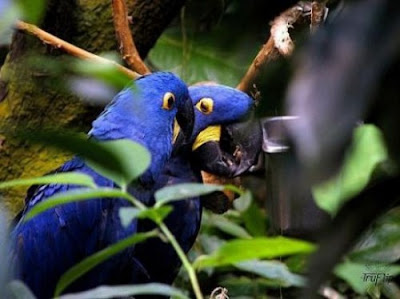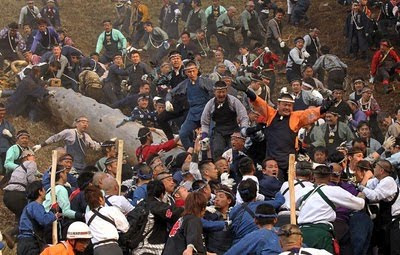We are talking about exotic animals, which can not be exported from their native country, but it still happens. Why? Yes, because a couple of flights for "exotic" can make a fortune. Unless, of course, law enforcement authorities can not detain smuggler. Let's see how many different animals are imported for the sake of profit.
 This monkey has a name thanks to the scientist who first discovered and identified this species. Monkey distributed mostly in Central Africa, and lives in swamps, in very humid. These monkeys are known to emit a very loud noises, being somewhat alarmed. In general, they look very unusual, plus very emotional.
This monkey has a name thanks to the scientist who first discovered and identified this species. Monkey distributed mostly in Central Africa, and lives in swamps, in very humid. These monkeys are known to emit a very loud noises, being somewhat alarmed. In general, they look very unusual, plus very emotional.All this allows to evaluate each member of the species in 7000 dollars.
 These parrots are the world's largest flying parrots. The length of the bird is about one meter, the color - a sky-blue. Its size and appearance, plus the intellect, make the parrot is very attractive for lovers of exotic animals.
These parrots are the world's largest flying parrots. The length of the bird is about one meter, the color - a sky-blue. Its size and appearance, plus the intellect, make the parrot is very attractive for lovers of exotic animals.Usual Macau in forests of South America, and now the population is rapidly declining. By the way, it is not safe birds - their beaks can crush a coconut.
Cost of Macau is 12 thousand dollars.
 Python - the largest snake in India, its length may reach 4 meters, what is, very much. Adult python is quite capable of killing a man, his muscles are so powerful. The animal got into the "arms" python, turns into a bag full of broken bones. Power pythons incredible.
Python - the largest snake in India, its length may reach 4 meters, what is, very much. Adult python is quite capable of killing a man, his muscles are so powerful. The animal got into the "arms" python, turns into a bag full of broken bones. Power pythons incredible.But despite all this, pythons are often kept as pets. Because of this, pythons have become an endangered species protected by law. By the way, pythons are also found in southern Asia.
The cost of a python is 15 thousand dollars.
 Surprised? Yes, these animals we often see in various broadcasts on TV. If you remember, their genome by only 2% different from the human. And those two per cent still do a monkey man.
Surprised? Yes, these animals we often see in various broadcasts on TV. If you remember, their genome by only 2% different from the human. And those two per cent still do a monkey man.So, chimps live in West and Central Africa, trying to stay closer to chelvoeku. With its FSUs ozhesti per person, ability to exercise a wide range of emotions (including laughter), chimpanzees are very popular among fans of exotic animals.
Room chimps closer to 65 thousand dollars.
 Actually, the white tigers are not a separate kind of tigers. It's just albinos, which under normal conditions do not survive. But in zoos, both in public and in private, white tigers live well.
Actually, the white tigers are not a separate kind of tigers. It's just albinos, which under normal conditions do not survive. But in zoos, both in public and in private, white tigers live well.Tigers Albino often found in home nurseries, representing a sort of pet (it is clear that home is a pet name still can not). So, the cost of the white tiger is 138 thousand dollars. Not bad, eh?

























































